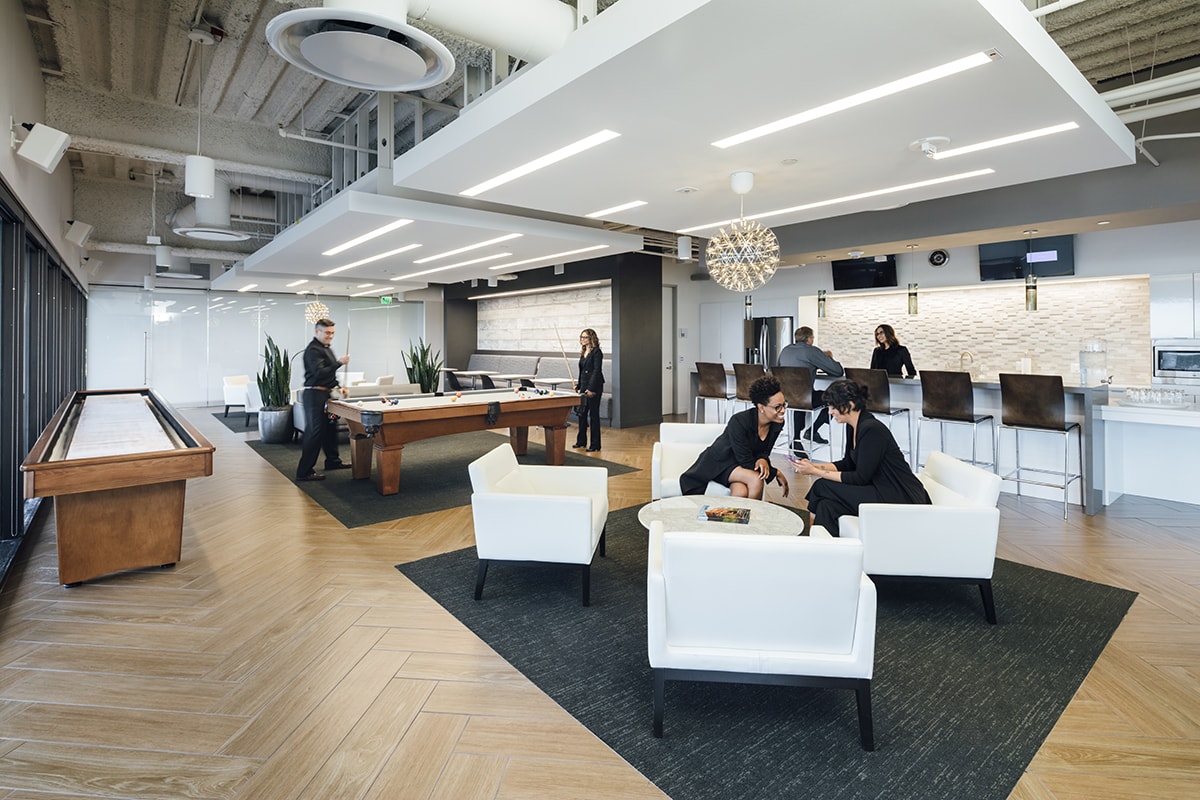“To be there or not to be there?” Prior to 2019, that was a question hardly ever posed by the average American worker. Doing your job from home was something of a rarity. Then, the pandemic hit. New options and new attitudes surfaced in a big way.
“With the shift toward greater flexibility allowing us to do much of our working tasks remotely,” Jay Olshonsky, president and CEO of NAI Global, said, “people who work in offices, which make up approximately 30 percent of the American workforce, have been able to do their jobs as well, nearly as well, and in many instances better, than they did before the pandemic, from anywhere.”
Today, the key for keeping employees happy, healthy — and under the company roof — means understanding and meeting their expectations.
According to Cushman & Wakefield’s Experience Per Square Foot™ survey, employees with flexible hours are 1.4-times more engaged — and their workplace experience is 1.9-times better — than those without flexibility. Rather than focus on employee sentiments, Gartner emphasizes the three drivers of employee engagement: organizational trust, commitment to coworkers, and worker capabilities.
“Compassionate leadership, enhanced employee engagement and creating more opportunities for employees starts with accepting, promoting and then effectively managing a flexible workforce . . . that either structurally or organically benefits and performs better through greater and consistent interaction,” said Olshonsky, predicting that by 2026 or 2027 most people will be working in traditional, yet more flexible, offices most of the time. “When people are happy, you get way better performance.”
“People choose to work in flexible-office and traditional-company-office spaces for similar reasons — largely to socialize, collaborate and feel connected,” added Bryan Berthold, Global Lead of Workplace Experience at Cushman & Wakefield.
Employees initially found themselves holding most of the cards in the labor market, however employers are increasingly encouraging employees to return to the office for the camaraderie and healthy human interaction that they provide.
Employee preference for digitized work environments will continue, and new amenities help establish a fresh, diversified environment that lends itself to productivity with increased morale and a greater sense of belonging.
In addition to increased mobility, choice and privacy, Gensler, the global design firm, asserts that in the post-pandemic world people expect “health and wellness to be built into everything.” Home is where the heart is for employees, as well as better access to the outdoors, environmental adjustability and comfort. The office of today should aim to match those things. Continued innovation through PropTech will only serve to further flexibility, including making it more convenient to access high-quality flex workspaces worldwide through an easy-to-use app, according to Berthold.
KBS has found spec suites to be a great example of how office owners can implement tenant-friendly amenities in the workplace. Owners can implement the most commonly requested building features that can boost leasing activity and retention levels in specific markets. By offering these amenities in turnkey office spaces, tenants cut down on their own development costs. In most spec suites KBS doesn’t only renovate the space the company invests in innovative furniture systems that can be reconfigured as tenants move through their post-pandemic, return-to-office process.
“Before COVID-19, workplace amenities were obviously important but mostly viewed as a standardized, check-the-box feature for office developments,” said KBS’ David Jenkins, Senior Vice President, Capital Project Management Eastern Region. “Now the focus is so much more on what contributes to the well-being of the people there — physically, emotionally and spiritually. With more than $50 million invested in amenities across our portfolio since mid-2020, I could not be prouder of KBS’s efforts once again in being a leader in this routine turned revolutionized office category.”
Learn more about office commercial real estate, visit KBS.com/Insights.




